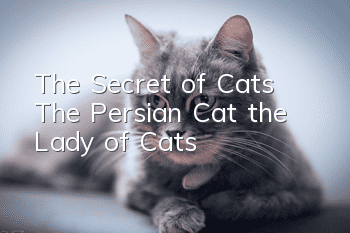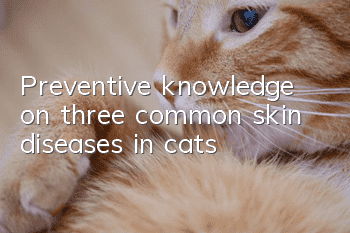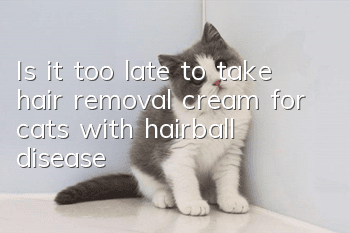The Secret of Cats: The Persian Cat, the Lady of Cats!

The sweet-looking Persian cat is one of the more popular cats nowadays. It is known as the "Princess of Cats" due to its elegant behavior. It is one of the purebred cats favored by cat lovers in the world.
The origin of the Persian cat
Persian cat (Persian cat) There are many opinions about the origin of Persian cat.
Such as indigenous cats originating from Iran and Afghanistan, or cats introduced to Europe from Turkey, and cats derived from the mating of Persian cats and Turkish Angora cats, etc.
The generally most recognized origin is a breed born in 1860 after more than 100 years of selective breeding in the UK, based on the Afghan long-haired cat and the Turkish Angora long-haired cat.
In the past, it was very popular for noble ladies in European courts to hold their pets in their arms when painting portraits. Because of this, Persian cats with their elegant and luxurious appearance are exactly in line with the noble status and quiet character of the ladies, making them honest and honest. Stay in the lady's lap.
Having all of the above conditions, Persian cats have become a popular and docile cat breed that is very suitable for indoor breeding.
This kind of cat was introduced into the country from the Kingdom of Persia along the Silk Road in the Tang Dynasty of ancient China. Persia was the name of the country in ancient Iran, so it was called the Persian cat.
Characteristics of Persian cats
Purebred Persian cats have large and round heads, flat foreheads, noses and jaws, short and flat noses, wide nose bridges, big and round eyes, small ears with rounded tips, and widely separated ears. It is short and straight, with large soles and short rounded feet. The whole body is covered with silky soft, fluffy and shiny hair. The short tail is symmetrical with the body. It is very majestic and gives people a noble and arrogant temperament.
Characteristics of Persian cats
Persian cats are gentle and gentle in nature, smart and agile, considerate, less active and prefer to be quiet, have a high-pitched and soft voice, love to act coquettishly, have a neutral personality, and have a graceful manner. They are naturally pampered and pampered, giving people a gorgeous, graceful and noble look. a feeling of.
Their silky long hair needs to be combed every day, but this job is also fun for the Persian cat's poop collector. It is also a pleasure to maintain their long hair, and it is just a legitimate way to pet the cat.
Persian cats are very gentle and quiet cats, and are not as aggressive as ordinary cats.
However, if the Ragdoll cat looks like a goddess quietly, then the equally quiet Persian cat looks a little dull because of its round head.
Persian cats are also very stubborn and won’t eat anything.Xi just never eats it, and has to wait until the owner replaces it with a new one!
The five major color systems of Persian cats
Persian cats have bright and diverse fur colors, with five major color systems, many of which have been recognized by various international cat breeding associations. White, black, blue and light yellow are more common, while tortoiseshell and red are more precious.
The black Persian was one of the first solid-color cats to become popular in the UK. Mrs. McLean Morris's cat, Satan, won all categories in England in the 1890s.
Black Persian is even more popular in the United States. A large black Persian male named King Max won first place at the Boston Cat Show in 1897, 1898 and 1899.
Points to note when raising Persian cats
Persian cats are long-haired cats, and grooming them is very important.
Persian cats shed hair easily, especially the abdominal fluff, which is most likely to get tangled and knotted. It can easily trap dirt and breed bacteria, so it is best to set aside 30 minutes a day to comb its coat and remove dead hair at the same time.
Tearing is a common problem in purebred Persian cats. The facial structure is different from other cat breeds. The lacrimal glands are shorter. When the cat sees food or yawns, it is easy to shed tears. We only need to scrub the Persian cat’s eyes more often.
Persian cats are covered with fur and lack sweat glands on their body surface, so body heat cannot escape easily, making them very prone to heat stroke, so they need to pay attention to the indoor temperature.
In addition, Persian cats are very sensitive to their own cat litter, food bowl, water basin, and litter box. They will notice any slight changes and it will easily irritate them. If you change the food bowl at will, the Persian cat is likely to refuse to eat. Therefore, in the process of raising Persian cats, do not change these appliances at will. If you really want to replace it, you can put the new one together first, use the two together for a period of time, and then take away the old one after the cat gets used to it.
- The cat suddenly became anorexic and became skin and bones
- What should I do if my cat’s nail clipping bleeds?
- Will pregnant cats become sleepy?
- How to deal with cat poop on your body
- Why do cats act like crazy after pooping?
- How to train a well-behaved cat? Teach you how to educate your cat!
- How many kilograms is normal for a Ragdoll cat to weigh at half a year old? Ragdoll cat weight standard!
- Why do cats like to eat mice? Explain from a scientific perspective why cats eat mice!
- Will cats get tired of eating the same cat food all the time?
- What should cats eat after pregnancy?



